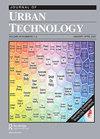20岁的城市主义分裂与“基础设施转向”
IF 4.6
3区 经济学
Q1 URBAN STUDIES
引用次数: 13
摘要
作为这本书的作者,我们确实很难相信《分裂的城市主义》(splitting Urbanism)出版已经20年了。然而,我们很高兴有机会利用这个周年纪念来回顾这本书在过去二十年中在人文和社会科学领域发生的更广泛的所谓城市“基础设施转向”中所起的作用。我们还想为未来的城市基础设施研究提供一个议程。我们写《分裂的城市主义》的目的是鼓励批判性的社会科学超越物质、网络基础设施作为技术、隐藏和理所当然的领域来维持城市生活的观点。尽管法国的情况要健康得多,但让我们感到沮丧的是,在英语国家,关于基础设施的辩论往往与关键的城市研究相分离,而主要是在工程师和专业政策制定者的特定行业和技术经济领域进行讨论。在我们看来,当时正在进行的关于城市和基础设施历史的健康辩论需要通过对城市和基础设施变化的当代动态分析的急剧增长来平衡。事实上,我们在书中大胆地指责,像通信、能源、水和移动服务这样的网络化城市服务仍然是批判性城市研究的“灰姑娘”:尤其是城市经济和社会地理学,以更多“特定点”城市服务的各个方面为特色,这些服务没有通过复杂的网络技术组合组织起来,这些技术在地方之间、地方内部和地方之间串起来。因此,我们充满了(相对的!)年轻人的大胆,在《分裂的城市主义》中寻求雄心勃勃的目标:对维持城市生活的物质联系提出问题。事实上,我们想要证明,明确关注网络物质,以及它们所维持的许多流动性和连接性,实际上提供了急需的分析购买,以帮助理解连接城市主义和全球化的复杂和快速移动的动态,理解可能会跨越发达资本主义、后共产主义和后殖民/全球南方背景下的城市辩论中始终存在的问题分区。因此,我们在本书中旨在说明,当时正在进行的社会和城市理论中的“关系”转向需要如何扩展,以涵盖在动态过程中不断登记和调用的多种网络连接的方式本文章由计算机程序翻译,如有差异,请以英文原文为准。
Splintering Urbanism at 20 and the “Infrastructural Turn”
As the authors of the book we do, indeed, find it hard to believe that it is 20 years since Splintering Urbanism was published. We are delighted, however, to have this opportunity to use this anniversary to look back at the book’s role in the wider so-called urban “infrastructural turn” that has occurred across the humanities and social sciences in the past two decades. We would also like to offer an agenda for future urban infrastructural research. Our aim in writing Splintering Urbanism was to encourage critical social science to move beyond a view of the material, networked infrastructures sustaining urban life as technical, hidden, and taken-for-granted domains. Although in France a much healthier situation pertained, we were frustrated that debates in the Anglophone world about infrastructure tended to be partitioned off from critical urban research, to be addressed overwhelmingly within the sector-specific and techno-economic worlds of engineers and specialized policy makers. It seemed to us that the healthy debates about urban and infrastructural history then underway needed to be balanced by a dramatic growth in analyses of the contemporary dynamics of urban and infrastructural change. Indeed, we made the bold accusation in the book that networked urban services like communications, energy, water, and mobility services remained the “Cinderella” of critical urban research: that urban economic and social geography, especially, featured burgeoning debates about all aspects of more “point-specific” urban services, those that were not organized through complex assemblages of networked technologies strung out across, within, and between places. Full of the boldness of (relative!) youth, we therefore sought in Splintering Urbanism to be ambitious: to problematize the material connectivities sustaining urban life. Indeed, we wanted to demonstrate that an explicit focus on networked materialities, and the many mobilities and connectivities that they sustain, actually provides much-needed analytical purchase to help understand the complex and fast-moving dynamics linking urbanism and globalization, understandings that might cut-across the always problematic partitions within urban debates across advanced capitalist, post-communist, and postcolonial/Global South(s) contexts. We thus aimed in the book to show how the “relational” turn then underway in social and urban theory needed to be extended to encompass the ways in which multiple, networked connections were continually enrolled and invoked in the dynamic processes and
求助全文
通过发布文献求助,成功后即可免费获取论文全文。
去求助
来源期刊

Journal of Urban Technology
URBAN STUDIES-
CiteScore
8.50
自引率
4.20%
发文量
42
期刊介绍:
The Journal of Urban Technology publishes articles that review and analyze developments in urban technologies as well as articles that study the history and the political, economic, environmental, social, esthetic, and ethical effects of those technologies. The goal of the journal is, through education and discussion, to maximize the positive and minimize the adverse effects of technology on cities. The journal"s mission is to open a conversation between specialists and non-specialists (or among practitioners of different specialities) and is designed for both scholars and a general audience whose businesses, occupations, professions, or studies require that they become aware of the effects of new technologies on urban environments.
 求助内容:
求助内容: 应助结果提醒方式:
应助结果提醒方式:


